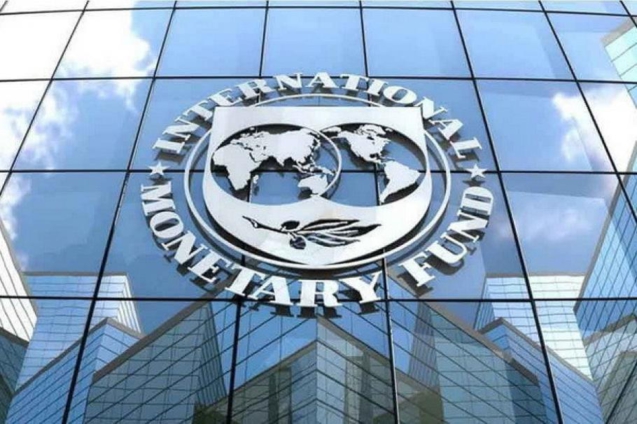As inflation, monetary and fiscal tightening, and the war in Ukraine continue to squeeze global activity, the International Monetary Fund says the Covid-19 pandemic is also weighing on the global macroeconomic outlook.
The Fund said pandemic-related forces have been particularly important in China, where a second-quarter contraction contributed to slower global activity.
“Temporary lockdowns in Shanghai and elsewhere due to Covid-19 outbreaks have weakened local demand, which is reflected in the new-orders component of the purchasing managers’ index. Other data corroborate this picture of slowing economic activity in China. Manufacturing capacity utilization in the country, for example, slowed to less than 76% in the second quarter”, it said in its latest World Economic Outlook.
Global growth: near-term slowdown
The IMF also predicted a slowdown in global growth, from 6.0% in 2021 to 3.2% in 2022 and 2.7% in 2023.
This prognosis for the global economy, it said, is far below average - global economic growth averaged 3.6% during 2000–21 and the same during 1970–2021.
For most economies, the Fund pointed out that the outlook is significantly weaker than projected six months ago, in the April 2022 World Economic Outlook.
Forecasts are weaker than expected for 143 economies (accounting for 92% of world GDP) for 2023.
The forecast for 2023 is the weakest since the 2.5% growth rate seen during the global slowdown of 2001— with the exception of those during the global financial and Covid-19 crises.
“The world’s three largest economies - China, the euro area, and the US — will slow significantly in 2022 and 2023, with downgrades compared with the predictions made in April [2022] and, in most cases, July [2022]. The negative revisions reflect the materialisation of downside risks highlighted in the April 2022 WEO [World Economic Outlook] and July 2022 WEO Update and discussed at length in the previous section: tightening global financial conditions in most regions, associated with expectations of steeper interest rate hikes by major central banks to fight inflation”.
The IMF however said a decline in global GDP or in global GDP per capita—which often happens when there is a global recession—is not currently in the baseline forecast.
However, a contraction in real GDP lasting for at least two consecutive quarters (which some economists refer to as a “technical recession”) is seen at some point during 2022–23 in about 43% of economies with quarterly data forecasts (31 out of 72 economies), amounting to more than one-third of world GDP.
Moreover, projections for global growth on a fourth-quarter-over-fourth-quarter basis are pointing to a significant weakening, to only 1.7% in 2022 and to 2.7% in 2023.
The IMF added that negative revisions are more pronounced for advanced economies than those for emerging market and developing economies, for which differing exposures to the underlying developments imply a more mixed outlook.
Overall, it said the outlook is one of increasing growth divergence between advanced and emerging market and developing economies.
Latest Stories
-
CODEO calls for re-run of Ablekuma North, Dome Kwabenya parliamentary elections
6 minutes -
4,155 cholera cases with 35 deaths recorded by December 23 – GHS
35 minutes -
Mothers celebrate arrival of Christmas Day babies at Ridge Hospital
3 hours -
Alleged National Security operative remanded over GH₵1m recruitment scam
3 hours -
Sametro Group of Companies donates to widows in Tarkwa Nsuaem Municipality to mark Christmas
4 hours -
Morocco’s Family Code revision proposals unveiled in Rabat
5 hours -
Saglemi fire: No documents lost, redevelopment project unaffected – Oppong Nkrumah
5 hours -
WAEC uncertain about meeting Dec. 29 deadline for WASSCE results
6 hours -
‘She Leads Project’ calls for more female representation in politics to address women’s issues
6 hours -
DJ Promise crowned Best Radio DJ at Dangme Music Awards 2024
6 hours -
Re-collation: Court sets Dec. 27 to hear NDC’s suit against EC
6 hours -
Let’s remain positive, optimistic, and with calmness, rebrand our party – Afenyo-Markin
7 hours -
L’aîné HR celebrates 30 years of excellence in HR management in Ghana
7 hours -
Corporate Wellness: Elegant Homes emphasizes impact of Annual Health and Family Fun Day
8 hours -
BoG issues bancassurance directives to stakeholders in financial sector; warns of sanctions
8 hours

